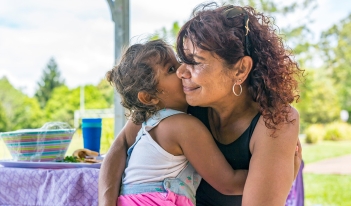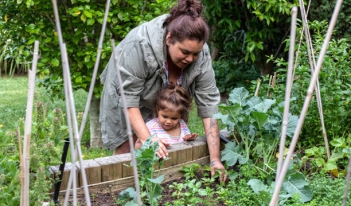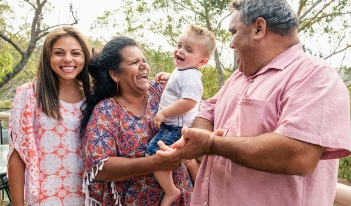An initiative which provides intensive, evidence-based and coordinated support to vulnerable children and their families – and to young people already in care – has reduced the number of children entering care services by nearly 10 per cent in its first two years, with 56 additional children diverted from out-of-home care.
The Family Preservation and Reunification Response ('the Response'), led by the Victorian Government’s Department of Families, Fairness and Housing and supported by CEI, the Victorian Aboriginal Child and Community Agency (VACCA) and the Centre for Excellence in Child and Family Welfare (CFECFW), aims “to promote strong families with children who are safe, healthy, resilient, and thriving, and parents and caregivers who are supported to create a safe and nurturing home environment.”
CEI has partnered with the Response since its inception in 2020 and has worked to develop a suite of evidence-based practices for practitioners to guide their work with vulnerable children and families. A key part of this work has been partnering with the VACCA and other Aboriginal Community Controlled Organisations to support the identification and development of culturally specific practices that support practitioners to work in a culturally safe and appropriate way with Aboriginal children and families.
“Together, we’re creating evidence-informed practice by integrating the best research with client values and practitioner expertise,” says Dr Melinda Polimeni, who leads CEI’s work on the Response. “All these inputs combine to create a suite of ‘practice elements’, that we work with practitioners and services to implement.”
“To create practice elements, we distil the essence of evidence-based interventions and make them applicable to the cohort of families supported by the Response. Cultural considerations have been in-built in partnership VACCA, who have led development processes with Aboriginal Community Controlled Organisations. The elements are by nature flexible and modular – giving practitioners a toolbox to work with children and families to meet the goals that are important to them.”
“We implemented the practice elements initially in nine community service organisations. We have since commenced a statewide scale-up, underpinned by a comprehensive implementation framework, supporting 34 community service agencies across Victoria to adopt and implement the Response. Last year, CEI and our partners trained more than 2,000 practitioners in these evidence-based practices, at more than 40 events,” says Melinda.
The implementation framework includes provision for local teams across the State – tasked with developing a locally-specific implementation plan, monitoring data, coaching practitioners and identifying barriers and enablers to implementation – as well as taking a broader view of system-level strategies to address challenges and barriers to getting the Response embedded into everyday practice.
“Research evidence shows that implementation affects outcomes,” Melinda notes. “You can have all the best intentions, but if an initiative is not grounded in high-quality evidence, fit for local purpose or implemented sustainably, it can actually do more harm than good.”
“We are really excited by some of the early results flowing from the Response, and by the high level of commitment to best-practice implementation from the Victorian Government and the agencies involved.”
Find out more about CEI’s approach HERE.
We acknowledge the Traditional Owners of country throughout Australia, and recognise their continuing connection to land, waters and community. We pay our respects to them and their cultures, and to Elders past and present.
 Case study 3 Nov 2021
Case study 3 Nov 2021 Case study 31 Mar 2022
Case study 31 Mar 2022 Case study 9 Nov 2020
Case study 9 Nov 2020
